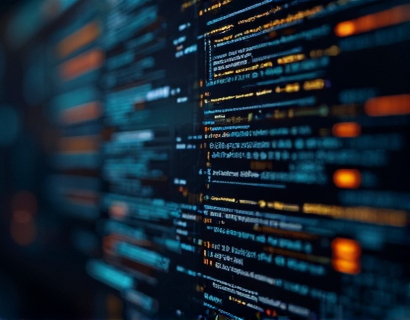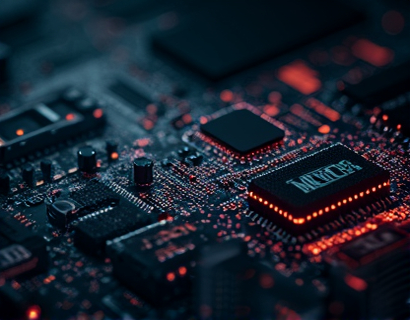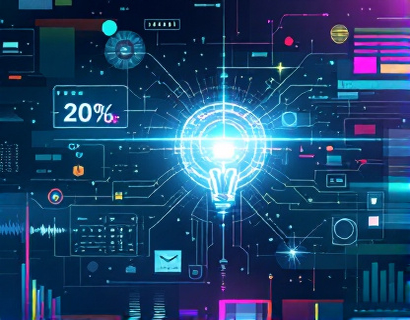Advanced Layer 2 Solutions for EVM: Driving Scalability and Security for Blockchain Developers
In the rapidly evolving landscape of blockchain technology, Layer 2 solutions have emerged as a pivotal advancement, particularly for Ethereum Virtual Machine (EVM)-enabled blockchain software. These solutions are designed to enhance the scalability and security of decentralized applications (dApps), addressing some of the most pressing challenges faced by blockchain developers. By offloading certain computational tasks from the main blockchain, Layer 2 solutions enable faster transaction processing, reduced costs, and improved overall performance. This article delves into the intricacies of advanced Layer 2 solutions, their benefits, and how they empower developers to create more efficient and secure dApps, ultimately driving the future of blockchain innovation.
Understanding Layer 2 Solutions
Layer 2 solutions refer to technologies built on top of existing blockchain platforms, such as Ethereum, to improve transaction throughput and reduce costs. Unlike Layer 1 upgrades, which involve modifying the core protocol of the blockchain, Layer 2 solutions operate within the existing framework, leveraging it to achieve greater efficiency. For EVM-enabled blockchains, Layer 2 solutions are particularly significant as they can handle a higher volume of transactions without overburdening the main chain.
One of the primary advantages of Layer 2 solutions is their ability to process transactions off the main blockchain, thereby reducing congestion and lowering gas fees. This is achieved through various mechanisms, including state channels, sidechains, and rollups. Each of these mechanisms has its unique approach to enhancing scalability and security, making them valuable tools for blockchain developers.
State Channels
State channels are a type of Layer 2 solution that allows multiple transactions to occur off-chain, with only the final state being recorded on the main blockchain. This method is particularly effective for applications that involve frequent, small transactions, such as gaming or micropayments. By moving these transactions off the main chain, state channels significantly reduce the load on the EVM, resulting in faster transaction times and lower fees.
The process begins with two parties opening a channel by locking a certain amount of Ether on the main blockchain. They then engage in a series of transactions off-chain, updating the channel state after each transaction. Once the desired number of transactions is completed, the final state is submitted to the main blockchain, where it is verified and the Ether is unlocked. This approach not only speeds up transaction processing but also enhances security by minimizing the exposure of funds to the main chain.
Sidechains
Sidechains are independent blockchains that are linked to the main EVM network, allowing assets to be transferred between the two. This bidirectional interoperability enables sidechains to process transactions more efficiently, as they can use different consensus mechanisms and scaling techniques. For instance, a sidechain might employ a proof-of-stake (PoS) consensus instead of the energy-intensive proof-of-work (PoW) used by the main chain.
By offloading transactions to a sidechain, the main EVM network can focus on critical operations, leading to improved scalability and reduced gas costs. Developers can create custom sidechains tailored to specific use cases, ensuring that each application runs optimally. However, the security of sidechains is paramount, and robust cross-chain protocols are essential to maintain trust and integrity across the ecosystem.
Rollups
Rollups are one of the most promising Layer 2 solutions for EVM-enabled blockchains, offering both scalability and security through various sub-types. The core idea behind rollups is to batch multiple transactions off-chain and submit a single, aggregated transaction to the main blockchain. This process significantly reduces the number of transactions the EVM needs to process, leading to faster confirmation times and lower fees.
There are two main types of rollups: Optimistic Rollups and ZK Rollups. Optimistic Rollups assume that all transactions are valid and only challenge invalid transactions. If a challenge is raised, the rollup provides evidence to prove the invalid transaction, ensuring security. This approach is cost-effective but requires a grace period during which challenges can be filed.
ZK Rollups, on the other hand, use zero-knowledge proofs to bundle and verify transactions off-chain, submitting a compact proof to the main blockchain. This method offers stronger security guarantees and faster finality, as the proof can be verified almost instantaneously. However, the computational complexity of generating zero-knowledge proofs can be higher, impacting the overall efficiency.
Benefits of Advanced Layer 2 Solutions
The adoption of advanced Layer 2 solutions brings numerous benefits to blockchain developers and the broader ecosystem. Firstly, scalability is significantly enhanced, allowing for a higher number of transactions per second (TPS) without compromising the network's stability. This is crucial for dApps that require high throughput, such as decentralized finance (DeFi) platforms and gaming applications.
Security is another critical aspect where Layer 2 solutions excel. By reducing the load on the main blockchain, these solutions minimize the risk of network congestion and potential security vulnerabilities. Additionally, mechanisms like zero-knowledge proofs in ZK Rollups provide strong cryptographic guarantees, ensuring that transactions are valid without revealing sensitive information.
Cost-effectiveness is a major advantage for developers, as reduced gas fees make it more feasible to deploy and maintain complex dApps. This democratizes access to blockchain technology, enabling a wider range of projects to thrive. Moreover, the improved performance and lower costs attract more users, fostering a more vibrant and active ecosystem.
Challenges and Considerations
While the benefits of advanced Layer 2 solutions are clear, there are several challenges and considerations that developers must address. One of the primary concerns is the complexity of implementing these solutions. Developers need a deep understanding of the underlying mechanics to ensure seamless integration with their dApps.
Interoperability between different Layer 2 solutions and the main EVM network is another critical factor. Ensuring smooth asset transfer and state synchronization requires robust protocols and standards. Developers must also consider the security implications of off-chain transactions and the potential risks associated with different Layer 2 mechanisms.
Furthermore, the ecosystem's maturity and adoption level play a significant role in the success of Layer 2 solutions. As more developers and projects adopt these technologies, the ecosystem will become more robust and user-friendly, driving further innovation and growth.
Future Prospects
The future of Layer 2 solutions for EVM-enabled blockchains looks promising, with ongoing research and development aimed at addressing current challenges and unlocking new possibilities. The integration of advanced cryptographic techniques, such as sharding and plasma, could further enhance scalability and security. Additionally, the emergence of cross-chain interoperability protocols will enable seamless interaction between different blockchain ecosystems, opening up new avenues for innovation.
As the demand for decentralized applications continues to grow, the role of Layer 2 solutions will become increasingly vital. By providing scalable, secure, and cost-effective solutions, these technologies will continue to drive the evolution of blockchain, empowering developers to create more sophisticated and user-friendly dApps. The future of blockchain innovation is deeply intertwined with the advancement of Layer 2 solutions, paving the way for a more decentralized and efficient digital world.










































